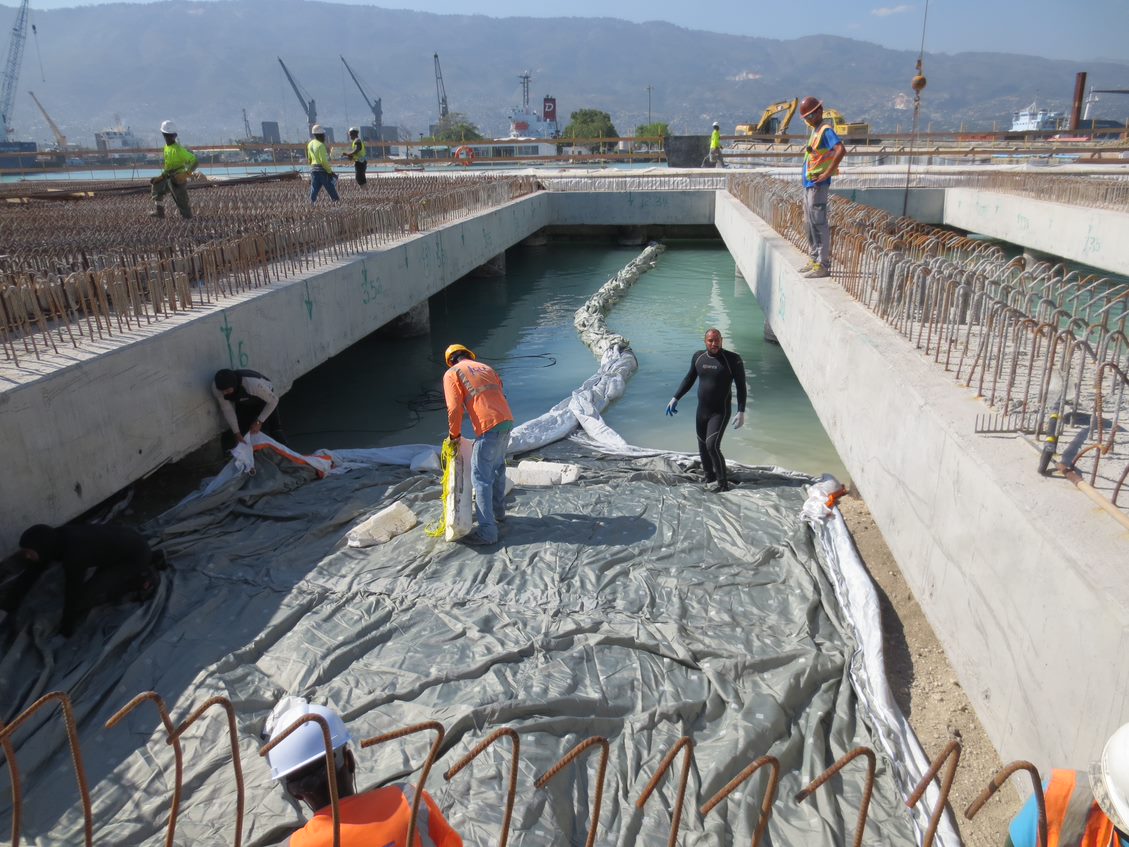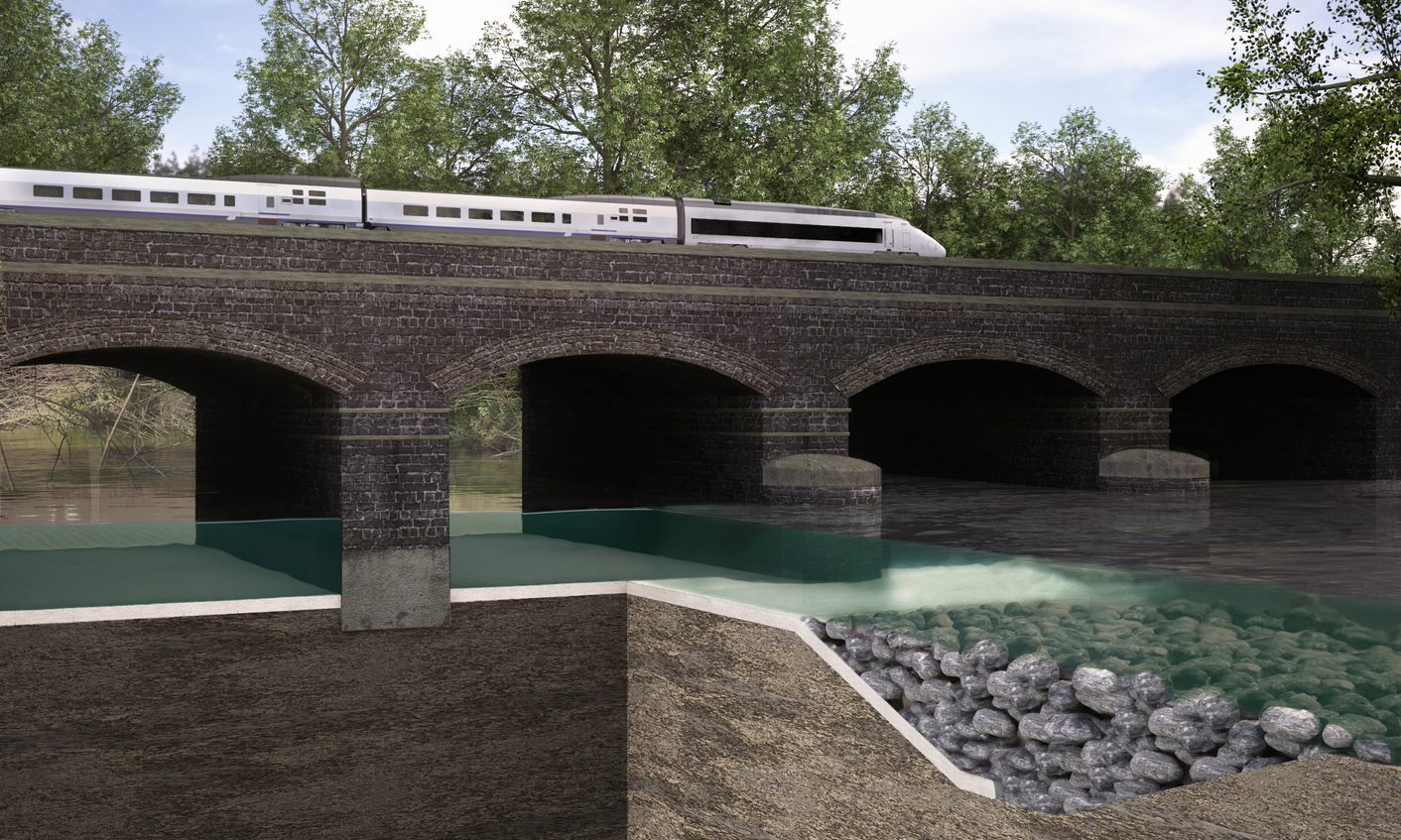
A senior engineer at a global marine construction firm, which has operated in the likes of the Indian Ocean and Antarctic, has told Project Scotland how its innovative concrete mattress system is helping to protect marine environments and the safety of divers.
Warwickshire-headquartered Proserve has a history of carrying out projects on ports in Scotland as well as more recently on a series of Network Rail bridges crossing waterways and a job at Rosyth Dockyard. Globally, it has worked on Canada’s Confederation Bridge, Jeddah Port in Saudi Arabia, Florida’s Port Canaveral, and is currently working on the construction of a port in Iraq.
The company is behind a concrete mattress formwork system that it developed over 50 years ago. The lightweight system is pump-filled in situ and can be installed around aged structures such as bridges to extend their lives, keep them safe from scour, and protect the waterbed from the damage alternative works could cause.
Matt King, senior engineer at the firm, explained that the solution has been frequently used in Scotland on older structures crossing waterways that were designed to different standards than seen today.
“The advantage is that it is relatively thin,” he said. “So, it can be installed to protect existing structures without having to do intrusive excavation or difficult works.”
Once installed, Matt explained that it offers a larger cross section of flow than previously would’ve been seen under crossings, which means more water can pass under the bridge in times of flooding. Furthermore, it is installed underneath the natural bed of the marine environment, which enables contractors to reinstate natural materials on top of it to allow marine life to create natural habitats.

As well as protecting the environment, the solution also looks to offer cost, time, and safety benefits. Matt explained that rail bridges are often found in hard to access areas and are low, meaning that it’s tricky to pile and drive plant underneath the crossings.
“The mattress is so lightweight and easy to handle that it means you can get it to the difficult to access sites,” Matt continued. “All the concrete weight is pumped – so they might be pumping concrete from 30 or 50 metres away to fill the mattress.”
Proserve’s in situ concrete solution has been used on a host of Scottish projects, including at Tarbert Ferry, Campbeltown Harbour, and Roysth Dockyard.
Explaining how a bespoke solution is created by Proserve for each project, Matt told how the project at Tarbert resulted in the firm’s engineers designing the mattress system to overcome the challenges of the area’s sloping bed, as well as out cropping rock and piles – with a wave screen allowing for the mattresses to be filled on the slopes and them being protected by a toe trench covered in rock armour. Proserve worked alongside Mott MacDonald and Farrans on this project.

At Rosyth, berth bed protection was required to protect against vessel scour. A 300mm deep concrete mattress was identified as being able to provide sufficient deadweight to counteract forces, with the system fitted over 12-hour shifts across a six-week period. The mattress edges were protected from under scour by being embedded directly to bedrock level and by a rock falling edge apron.
The concrete mattress was used in Campbeltown to expand the harbour, with it being utilised to protect the extended slipway and existing old quay structure from tugboat propeller action whilst large vessels manoeuvred. Providing a 150mm thick cast in situ concrete slab on the harbour bed prevented scour, while the slab construction with interlocking mattress panels meant entry of positive pressure from vessel propellers was prevented.
Fabric restraint envelopes and slower filling rates allowed the mattresses on slopes up to 1:2, with the edges being again protected by a toe trench covered in rock armour and a tremie concrete seal to the piled walls.
Explaining that Proserve carries out around 10 projects annually in the UK using the concrete mattress system, Matt said UK infrastructure is of such a high standard that there isn’t as high a demand for new capital projects as they find globally.
When a project does crop up, Proserve gathers the necessary information on the construction conditions underwater – such as flows, vessel movements, visibility, nature of the seabed – before creating the bespoke solution and supporting local firms to do the installation work.
“Local companies in Scotland know the locations and conditions well,” Matt said, before telling of work carried out on railway bridges with Prestwick-headquartered Westlin Group. “We’re talking to people fairly frequently in Scotland,” he added. “We work all around the world, but we’re always delighted to be working in Scotland – it’s a beautiful place.”








